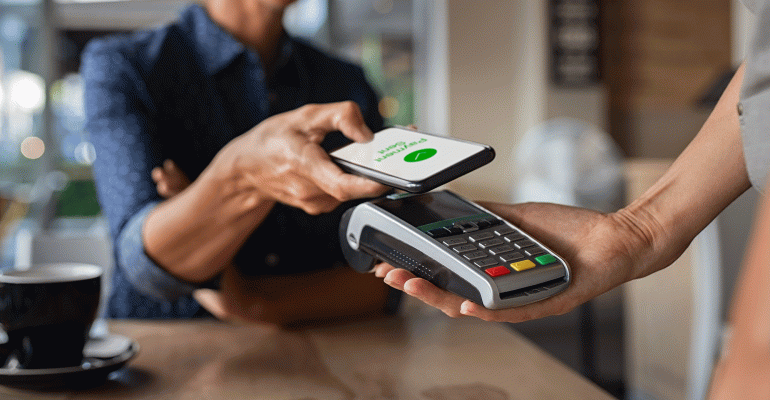If it seems like nearly every restaurant concept is adding a loyalty program these days, that’s because nearly every restaurant concept is adding a loyalty program these days. The past two years have been full of loyalty launches, or iterations, and now nearly 60% of all restaurants offer such programs.
Consumers who are used to more personalization from the likes of Amazon and Netflix are very much driving this trend and in fact, 86% of consumers say they are interested in joining a restaurant loyalty program. But there are other drivers at play here. Zach Goldstein, who founded Thanx in 2011, said restaurants are in an attention and convenience battle with third-party delivery that is creating more urgency.
“If you’re not locking in repeat purchasing with your top customers, the third-party companies are. You’re going to be turning away revenue because it will be easier for customers to order from third parties,” he said.
This has created what he calls an “unprecedented” adoption of loyalty programs.
“I’ve never seen a period with more attention on customer loyalty. Restaurants of all sizes are jumping into this space at a remarkable clip,” he said.
Andrew Robbins, CEO of Paytronix, added that we’re nearing the end of the loyalty adoption stage that began in 2000 with spreadsheet databases.
“When a late majority is in the adoption phase, the technology comes crashing in quickly. This is now a mandate of hospitality because programs are now able to know more about customers and what they want,” Robbins said. “As the world’s gotten more digital, that has changed the mandate.”
Indeed, the world has gotten more digital – a trend that accelerated significantly during the pandemic. This has increased the comfort level of consumers engaging with brands digitally. It has also proven a solid return on investment for restaurant operators who have historically been conservative on tech adoption. Both Goldstein and Robbins note that the technology has quickly become more affordable and more efficient, which also bodes well for smaller operators.
“Five years ago, operators had to string together five different vendors. Now, they can get all of their guest engagement through one provider. For independents, it’s much easier now to get started. That’s a big, big change,” Robbins said. “
As such, this digitally-enabled, loyalty-heavy environment seems to be leveling the playing field between large chains and small concepts/independents in the fight over consumers’ increasingly fractured attention. Last year, for instance, McDonald’s introduced its MyMcDonald’s Rewards. Also last year, 30-unit Velvet Taco launched its first-ever loyalty program, The Velvet Room. While the two concepts serve wildly different occasions, having an incentive program in place could ultimately help consumers make a last-minute dining decision toward either.
“McDonald’s plays a game of scale and smaller restaurants can’t compete with it when it comes to contracts, finding great locations, systems – all that stuff. But loyalty and digital guest engagement with loyalty as the centerpiece, you can compete with the big guys,” Robbins said.
Cassie Cooper, director of marketing at the Velvet Taco, agrees. She said over 15% of all sales now come through members of The Velvet Room.
“This means our loyalty program is increasingly top-of-mind for our customer base,” she said.
What enables that top-of-mind response is loyalty programs’ shift toward brand-centric experiences.
“Jimmy John’s is all about ‘freaky fast’ and so their loyalty program is all about freaky fast. Dutch Brothers has a sticker program that ties into what the brand is already doing. It comes down to extending your brand to the digital world. People now want and expect brand engagement and hospitality beyond the four walls of a restaurant,” Robbins said.
For Velvet Taco, that means offering exclusive rewards that other restaurants might not offer, like a paid trip to Dallas to attend a Weekly Taco Feature (WTF) taste testing. For Erik’s DeliCafe, based in California, that means directly communicating with consumers through the loyalty program.
“Guest relations is how (we differentiate). If guests have questions, we get back to them in a timely manner. I see guest relations as a marketing package of our loyalty club. We could have the best loyalty club in the world, but if we don’t reply to them, the club loses its impact,” said Erik’s President and General Counsel, Brian Johnson.
Johnson adds that his concept doesn’t have the resources to compete with huge brands, but loyalty is an area where it can.
“I believe we punch above our weight when it comes to our loyalty and bigger brands,” he said. “I also believe it is important to have a loyalty club because of the brand awareness and loyalty it creates.”
Indeed, loyal customers are critical for the success of any restaurant. According to a study from BIA/Kelsey, a repeat customer spends nearly 70% more than a new customer, for instance. PYMTS.com data finds that 40% of diners would spend more if they were a loyalty member. Cooper said The Velvet Room members spend over 6% higher per check than other channels and visit more frequently.
As the industry continues to evolve well beyond a brick-and-mortar presence, blurring lines and intensifying competition, a focus on top-spending, frequent customers becomes even more critical.
“Instead of trying to get all of the customers and focusing on volume, loyalty programs are moving toward more personalization. Incentivizing customers who come in more and spend more rather than the ones who may come once and never return is much more aligned with the success of a restaurant,” Goldstein said. “Small restaurants have a new secret weapon of attracting the attention and lifetime value and of their most frequent guests and getting their revenues directly. The margin impact potential is massive. It’s a game changer.”
Contact Alicia Kelso at [email protected]





